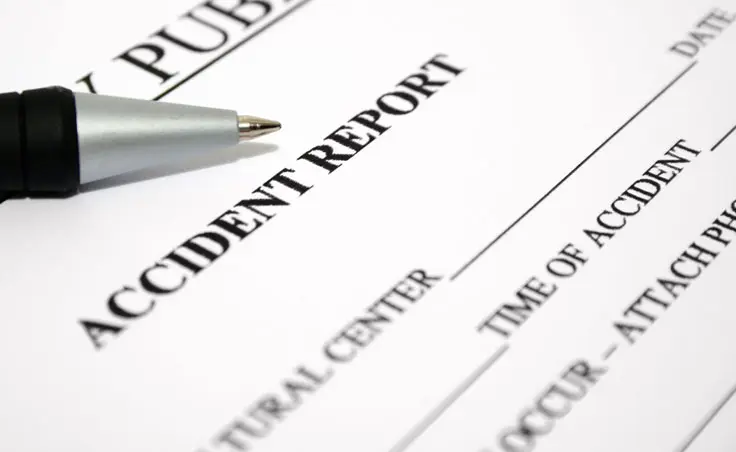Accident reports are an important part of your case. Here’s how to request a copy of your report in Texas.

If you’ve been involved in a car accident, one of the most important pieces of evidence is the accident report—called a “Texas Peace Officer’s Crash Report” (CR-3) in Texas. You’re entitled to a copy of this report, and this article will explain how to request one.
Following an auto accident, there are several things you need to do in order to ensure that you have the best chance at a successful claim. One of the most-overlooked steps is immediately requesting a copy of your accident report. These police reports are often heavily relied upon by insurance companies, and will likely have a significant impact on your claim.
Because Texas peace officer crash reports are typically filled out by the responding officer and not a trained investigator, they are not always 100 percent accurate. Your attorney may be able to have the original report amended (or at least request a supplemental report) in order to correct the facts, but it’s extremely important that any mistakes or inaccuracies be caught early on.
If you were injured in Texas accident and have hired a car accident attorney like us to handle your claim, your crash report has likely already been requested. If you do not have an attorney, this article will explain the process of requesting a copy—either online or directly from your local law enforcement office.
What’s Contained in an Official Crash Report?
An accident report is written/certified by the responding officer, and is essentially a summary of the facts (i.e., what happened) based on the officer’s initial observations and interviews with the involved parties. A Texas Peace Officer’s Crash Reports typically contain the following information:
- Date, time, and location of the accident.
- Identifying information for those involved.
- Each driver’s insurance provider and policy number.
- Known injuries and extent of damage to the vehicle(s) involved.
- Statements from those involved and witnesses.
- Witnesses contact information (if applicable).
- Road, weather, and lighting conditions at the scene of the accident.
- A visual diagram of the accident.
- Laws/codes violated.
- The officer’s opinion as to cause and/or fault.
Crash reports use various codes and abbreviations in order to save space, and these codes often vary by state. For Texas accident reports, see this code sheet provided by the Texas Department of Transportation.
Its important to understand that in Texas, police officers are not required to submit a written report for every reported motor vehicle collision. In fact, depending on your jurisdiction, police may not even respond to the scene of an accident unless there’s an injury involved. Texas Transportation Code §550.062 states that officers only need to submit a written accident report if a crash results in injury, death, or more than $1,000 in property damage.
If you were in an accident that did not require a police report or investigation, Texas does still allow you to fill out a “blue form” driver’s crash report (CR-2). While the Texas Department of Transportation no longer requires nor retains the CR-2 form, it can still be an important and effective way to create a record and document the circumstances of your crash for insurance purposes.
When Will My Accident Report Be Available?
In Texas, accident reports are typically available within a few days to three weeks of the incident, so it’s important to request a copy as soon as possible. If the crash resulted in death or serious injury, it could take well over a month before the investigation (e.g., accident reconstruction, criminal investigation, toxicology report, etc.) is fully complete.
Most preliminary accident reports are generally available within a week, but your best bet is to keep checking on the status daily. If your accident report still unavailable after some time, express your concerns to your attorney or insurance company.
Obtaining a Copy of Your Accident Report
At the time of the accident, the reporting officer should have given you an accident or incident report number. If you don’t have this number, you can still obtain the report provided you have the following information:
- Date and time of the accident.
- City, state and location of the accident.
- Name of the driver(s) involved in the accident.
- Investigating police department.
If your accident occurred in 2018 or later, you will most-likely be able to search for and request a copy of your crash report online at https://cris.dot.state.tx.us/. However, some municipalities in Texas may still require you to visit the police department in person or request a copy by mail.
In Dallas, you can purchase a certified copy of your Texas Peace Officer’s Crash Report online, through the mail (using form CR-91), or in person at the Dallas Police Department’s customer service window located at 1400 S. Lamar St.
Texas Transportation Code §550.065 (c)(4) limits the release of a crash report to “any person directly concerned in the accident or having a proper interest therein” (e.g., involved parties, their attorneys, and insurance companies). If you already have an attorney handling your injury claim, they will usually obtain the official report for you the minute it’s available.
A personal injury attorney can be particularly helpful throughout the claims process, as they’ve helped countless people just like you get the money they deserve following a serious accident. Not only can hiring an attorney save you considerable time and effort, but they can also explain the report as well as help you dispute and correct inaccurate information—all on a no-win no-fee basis.

Montgomery Law is a Dallas-based personal injury law firm focused on getting clients the justice and compensation they deserve.
Call us toll-free at 1-833-720-6090 to discuss your case today for no cost.


Leave A Comment